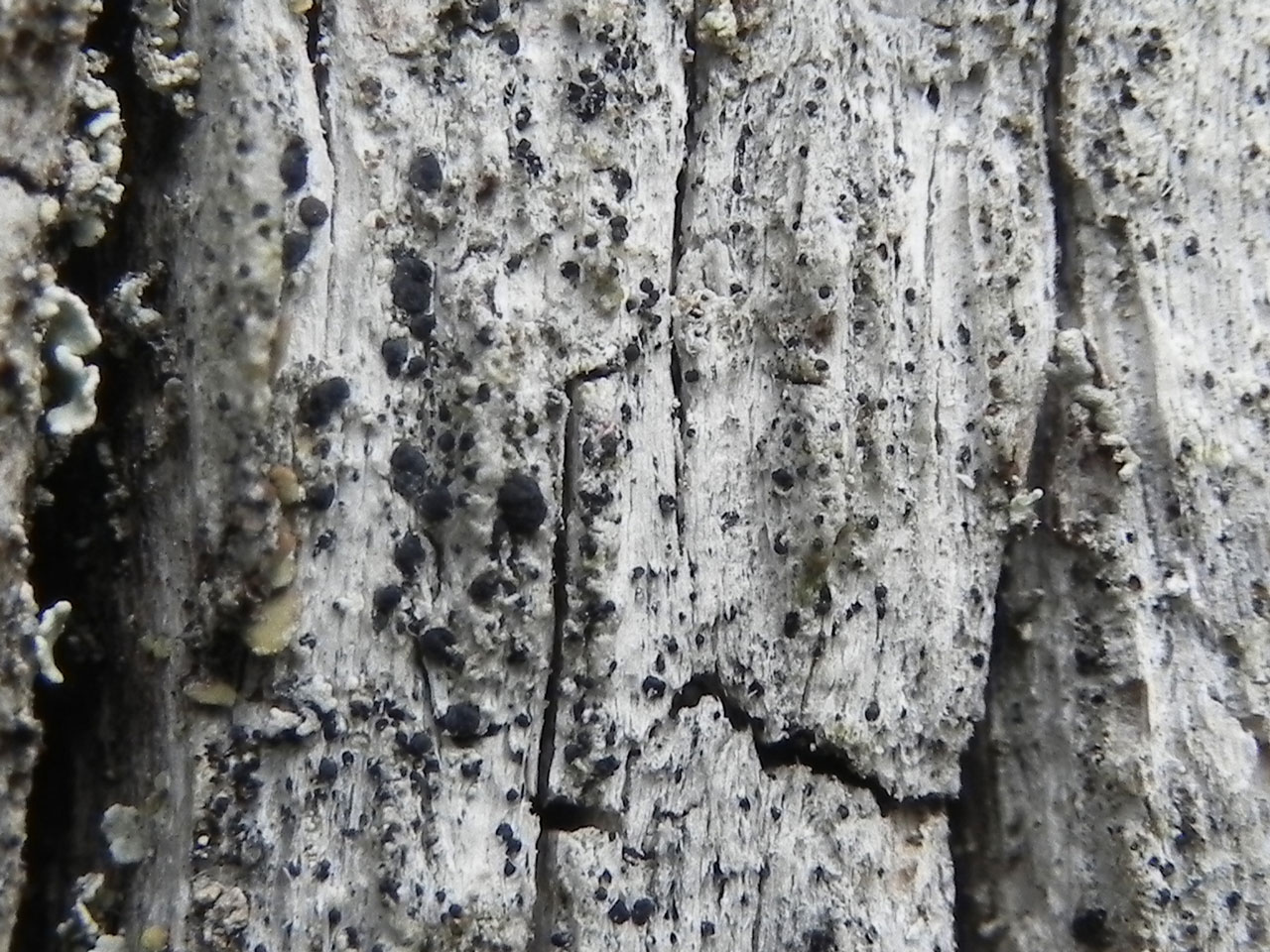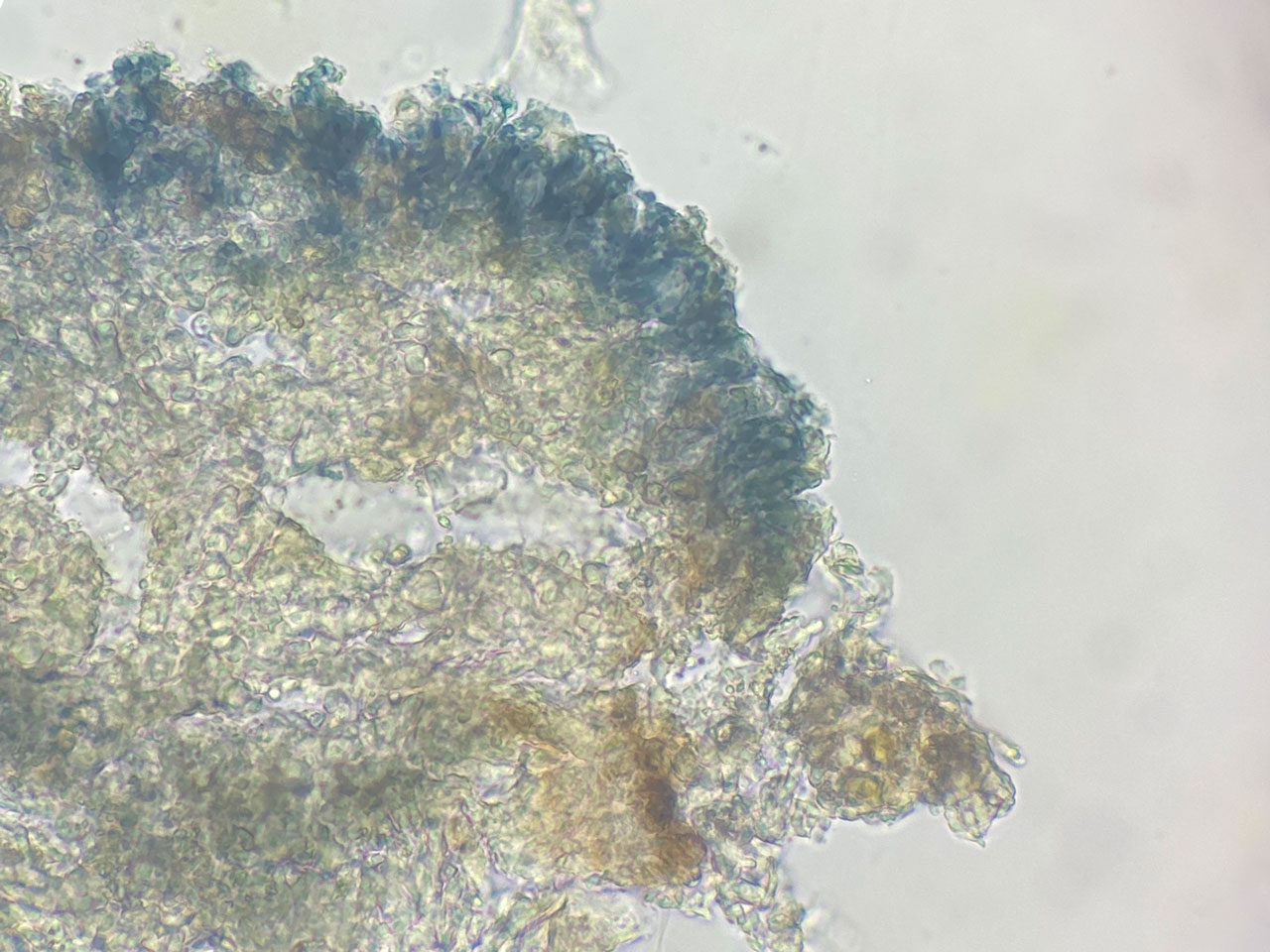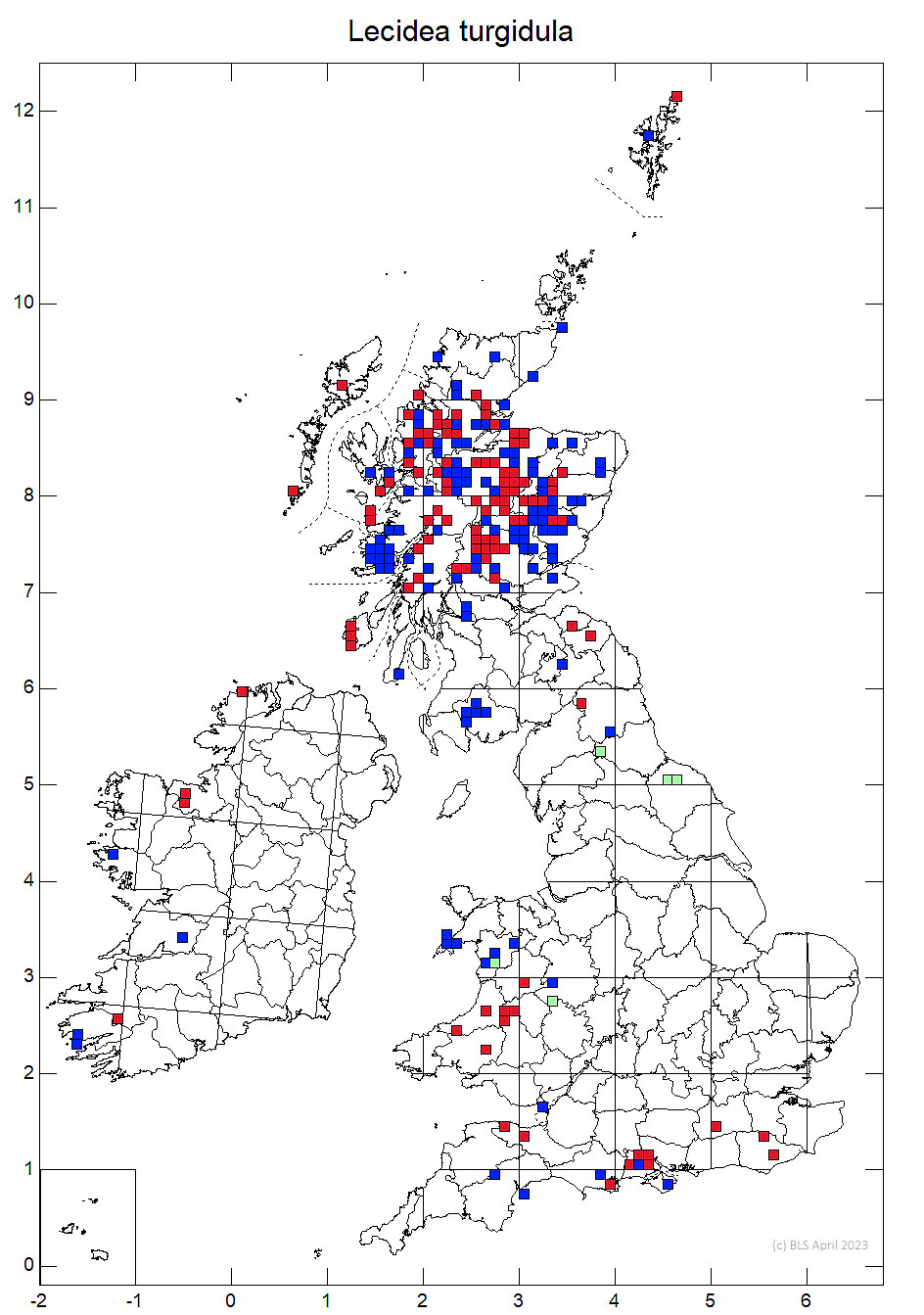Lecidea turgidula
A widespread species of lignum and acid bark in the Scottish Highlands but rare, mainly on lignum to the south. Distinct in the black apothecia, which have bluish bloom when wet and sometimes thinly white-pruinose, usually associated with black pycnidia ca 100 µm diam. The epithecium is characterised by the brownish to blue-green colours which are K± green intensifying. The similar but rare L. leprarioides is separated by its sorediate thallus.
Thallus effuse, immersed or thinly granular, whitish to grey, often inconspicuous. Apothecia 0.2–0.6 (–0.8) mm diam., black, with bluish bloom when wet, sometimes thinly white-pruinose, sessile or (on wood) partly immersed, flat to convex; true exciple excluded, usually of coherent (in K) radiating hyphae, colourless to darkish greenish or brownish, I± pale violet; epithecium brownish to blue-green, K± green intensifying, N+ reddish, also with minute pale granules that dissolve in K; hymenium 30–40 (–50) µm tall, streaked violaceous (K+ green) or brownish to greenish (K+ intensifying); hypothecium colourless; paraphyses 1.3–2 µm diam., sparingly branched and anastomosed, the apices scarcely swollen but sometimes with a dark brownish hood to 5 µm diam. Asci 25–30 × 10–13 µm, Bacidia-type. Ascospores 6–10 (–14) × 2.5–4.5 (–6) µm, 0(-1)-septate, narrowly ellipsoidal to cylindrical, sometimes slightly curved. Pycnidia ca 100 µm diam., black, ± immersed in the substratum, the wall green-brown, K+ green intensifying; conidiogenous cells in chains, subcylindrical; conidia arising laterally and terminally, 3–3.5 × 1.5–1.8 µm, bacilliform. Thallus C–, K–, KC–, Pd–, UV– (placodiolic acid).
Sometimes mistaken for a Micarea (e.g. M. olivacea), but distinguished from that genus by the exciple of coherent hyphae, and minute granules in the epithecium that give the apothecia a pruinose appearance (bluish bloom when wet). Schmull et al. (2011) showed that this species and L. leprarioides occupy a well-defined clade within the Lecanoraceae; a new genus would probably be justified but this has not yet been introduced.
On acid bark and wood of (mostly) conifers in the Scottish Highlands where it is widespread, mainly Oak lignum in old woodlands and parklands to the south where it is infrequent.

Common in N. Scotland (Highlands), extending locally to S. and S.W. England and Wales where it is occasional and Ireland where it is rare.
Fryday, A., Cannon, P., Coppins, B., Aptroot, A., Sanderson, A. & Simkin, J. (2024). Lecideales, including Amygdalaria, Bellemerea, Bryobilimbia, Cecidonia, Clauzadea, Farnoldia, Immersaria, Koerberiella, Lecidea, Lecidoma, Porpidia, Porpidinia and Romjularia (Lecideaeae) and Lopadium (Lopadiaceae). Revisions of British and Irish Lichens 40: 1–51.
Schmull, M., Miądlikowska, J., Pelzer, M., Stocker-Wörgötter, E., Hofstetter, V., Fraker, E., Hodkinson, B.P., Reeb, V., Kukwa, M., Lumbsch, H.T., Kauff, F. & Lutzoni, F. (2011). Phylogenetic affiliations of members of the heterogeneous lichen-forming fungi of the genus Lecidea sensu Zahlbruckner (Lecanoromycetes, Ascomycota). Mycologia 103: 983–1003.
Text by Neil A Sanderson based on Fryday et al (2024)




